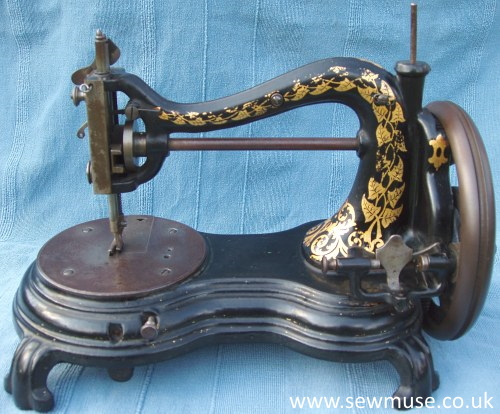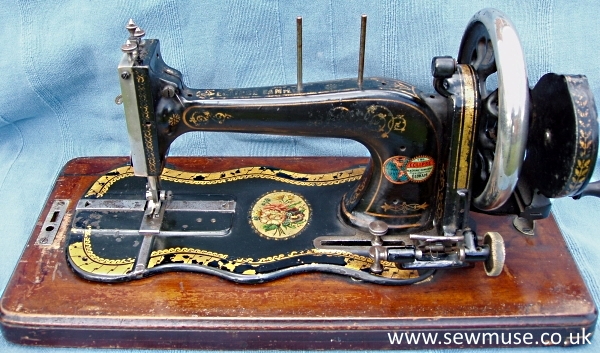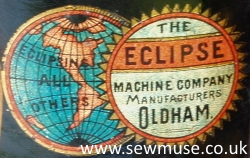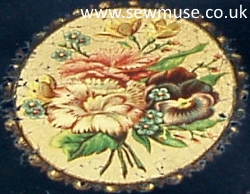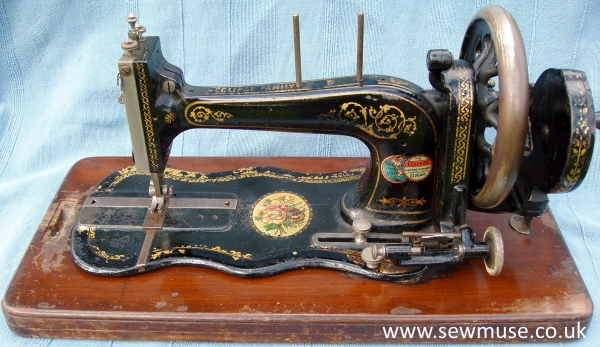Shepherd, Rothwell & Hough was formed in 1872 by Fred Rothwell, his brother Tom, Emanual Shepherd and James Edward Hough. Fred having actually been apprenticed to Bradbury & Co in 1866. They started trading from premises at Roscoe Street, Mumps before moving to Matley's Buildings, Gas Street, Oldham producing various models of the Eclipse sewing machine.
The Eclipse "S" machine was based on the Singer principle and was available as both a Family and Medium machine. The Eclipse A, B, and C was a Howe principle machine with step or wheel feed.
Various patents were taken out in the partners names. Their patented shuttle was claimed to give the best tension and to be the easiest threaded, they also patented a feeder which was silent and adjustable, as well as a hinge, bobbin winder and a treadle stand, the latter being patented in 1876.
In 1875 the firms Trade Mark included the phrase "all other sewing machines eclipsed", by 1878 this had changed to "eclipsing all others". The firm had also moved to the Oldham Sewing Machine Works, Cromwell Street, Oldham by that date. In 1879 the firm was awarded a medal for its sewing machines by the Oldham Agricultural Society.
On 4th January 1882 the firm completed its move to Rochdale Road, Oldham but the partnership dissolved in November 1887. Fred and Tom Rothwell continued the business until the summer of 1890 by which date the firm had produced approximately 40,000 sewing machines of various types.
In 1890 the Rothwells formed the Eclipse Machine Company continuing to produce Eclipse Sewing Machines from the factory on Rochdale Road. The firm later diversified producing Rothwell vehicles until the First World War eventually closing in 1923.
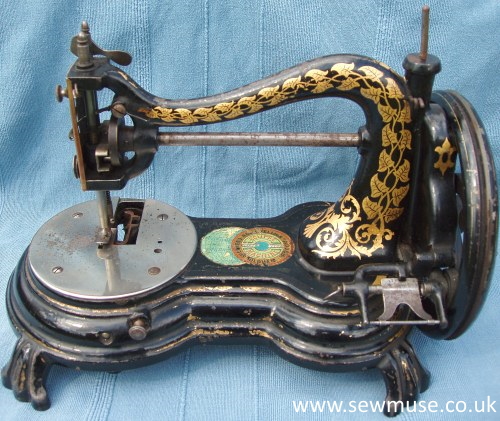
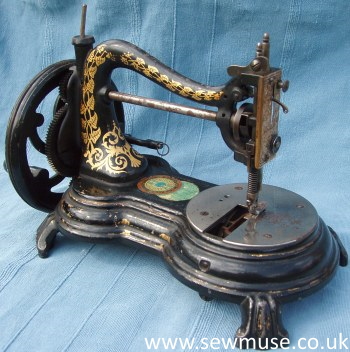
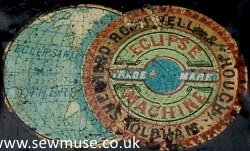
Eclipse Hand: Serial No. 1565.
Although this machine is clearly labelled Shepherd, Rothwell & Hough it is something of a mystery as unlike both earlier and later Eclipse Hand machines which were manufactured by Shepherd, Rothwell & Hough this machine was without doubt made by Jones & Co. It has all the distinctive features of the Jones Hand including early Jones face plate, bobbin winder (with patent number), gear guard, and thread guides.
One can only presume that Shepherd, Rothwell & Hough had production difficulties with the Eclipse Hand and consequently had to buy machines from Jones & Co. What is known is that in January 1882 Shepherd, Rothwell & Hough completed their factory move during which they probably would have had to reduce or stop production. From data we have been collecting regarding the Jones Hand we believe this machine would have been made in 1881 so it is possible this machine is linked to that particular event.
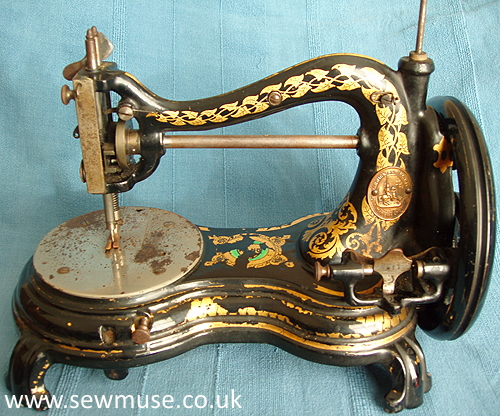
Warwick Hand: Serial No. 4346.
This machine was produced by Shepherd, Rothwell & Hough for Henry Wallwork & Co., City Works, China Lane, Manchester c1888 and labelled as The Warwick.
It is clearly influenced by the Jones Hand but it is not a direct copy as it has several minor modifications. Notably the bobbin winder is different and an additional spool pin is provided on the rear of the pillar. The gear guard is a different casting and there are minor alterations to some of the other castings. Also note the thread guides on the arm are fixed with screws.
It came complete with original manual and wooden case which is in poor condition.
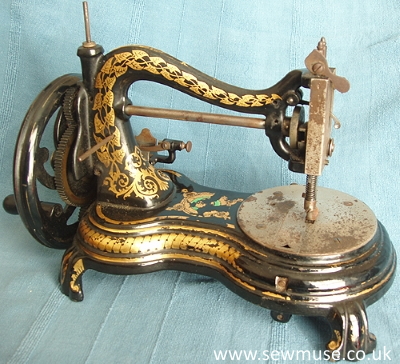
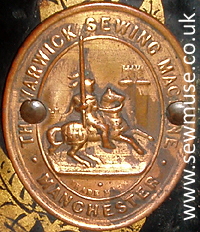
Henry Wallwork & Co.
In 1886 this Company took over the sewing machine business of James Warwick who had started manufacturing sewing machines c1866 and had had premises at 26 Hilton Street, Manchester and by 1874 at 59 Hilton Street. Various models of sewing machine were produced by James Warwick including The Victoria which was an improved Wheeler & Wilson machine and The Warwick Medium which was an improved Singer 13 machine.
In early 1888 Henry Wallwork & Co. moved the business to 25 Hilton Street, Manchester and it appears became a dealer rather than a manufacturer. Warwick's as the shop became known was still repairing and retailing sewing machines in 1902.
Eclipse Hand Serial No. 4965.
Probably produced a year or so later than the above machine this example has extensive wear to the decals.
The machine features a nickel plated needle bar cover and on this example the company Trade Mark is stamped on the cloth plate.
Eclipse Family Serial No. 42975.
This machine is thought to have been produced around 1891. It has the company's Trade Mark on the pillar of a stylised image of the Sun passing over the world with the words "Eclipsing all Others".
The decals are worn on the arm and the front edge of the bed but the centre decal which is a bouquet of flowers is largely intact.
This was the company's Family machine - the equivalent of the Singer 12. The company also made a treadle version - the Eclipse Medium machine which was the same class as the Singer 13.
Eclipse Family Serial No. 46862.
Probably produced in the same year as the above machine this example has more wear to the decals and the jappanning has been chipped by the left slide plate. Again the machine features the nickel plated needle bar cover and note the casting for the thread guide on top of the belt guard.
The case of this machine is shown on the Cases & Bases Page
For additional information on both these companies go to Oldham Manufacturers






